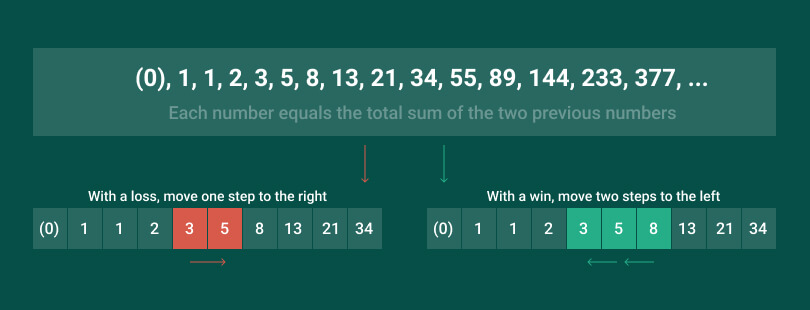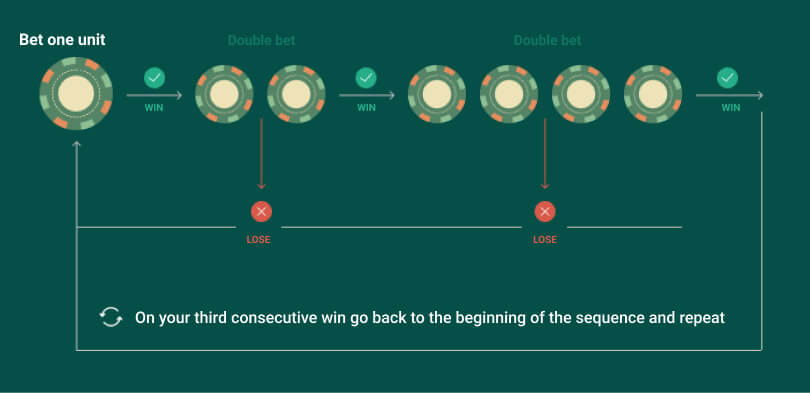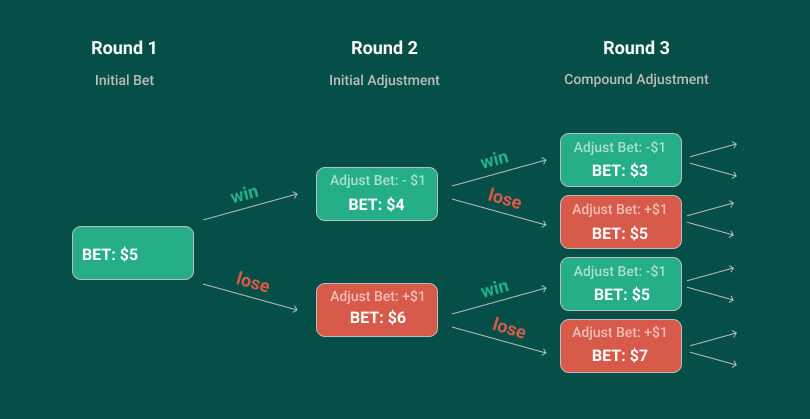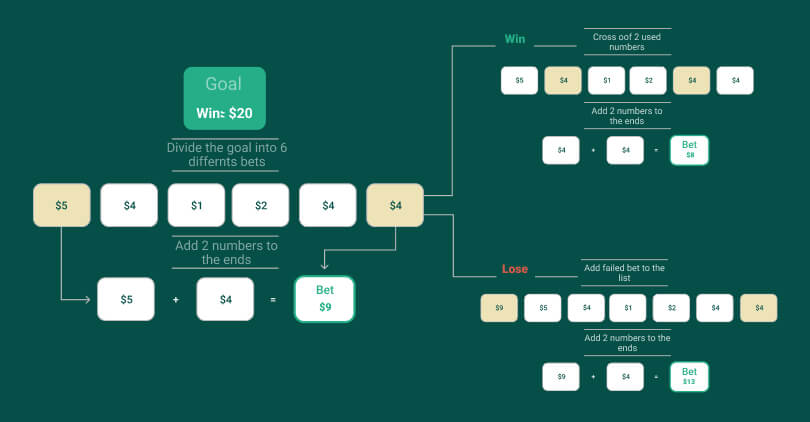Fibonacci Roulette Strategy
Fibonacci is a mathematical sequence of numbers discovered by the mathematician of the same name in the 13th century, and each digit in this sequence is the sum of the previous two numbers (1, 1, 2, 3, 5, 8, 13, 21, and so on). It is believed that this sequence represents the “Golden Ratio” and is at the root of everything in nature. This strategy uses the Fibonacci sequence to determine the stake amounts.

- To use the strategy, you have to bet 1 unit in the first two games because at least two numbers are needed for the Fibonacci sequence.
- If you lose the second game, you have to set the bet amount in the third game based on the sum of the first two numbers in the sequence (i.e., 1 + 1 = 2 units)
- If you win the third game, you have to set the bet amount in the fourth game based on the previous number in the sequence (i.e., 1 unit)
- If you lose the third game, you have to set the bet amount in the fourth game based on the sum of the previous two numbers in the sequence (i.e., 2 + 1 = 3 units)
- Depending on the loss/win situation, you either add the previous two digits in the sequence or return to the previous digit to determine the stakes. You can continue this as long as you want.
Pros
- Provides a quicker profit in short games;
- Very easy to use and understand;
Cons
- If the game goes on for too long, its efficiency will drop and may cause the total bet to increase too much;
- The Fibonacci sequence has not been proven to work in casino games as well;
The main idea here is the belief that a sequence of numbers that can be seen in everything in nature will work in roulette too, but there is no mathematical evidence to support this belief. However, the Fibonacci strategy is easy to use, gives results even with low bankrolls, and is a system that can be preferred by low-budget players as long as the game is short.








